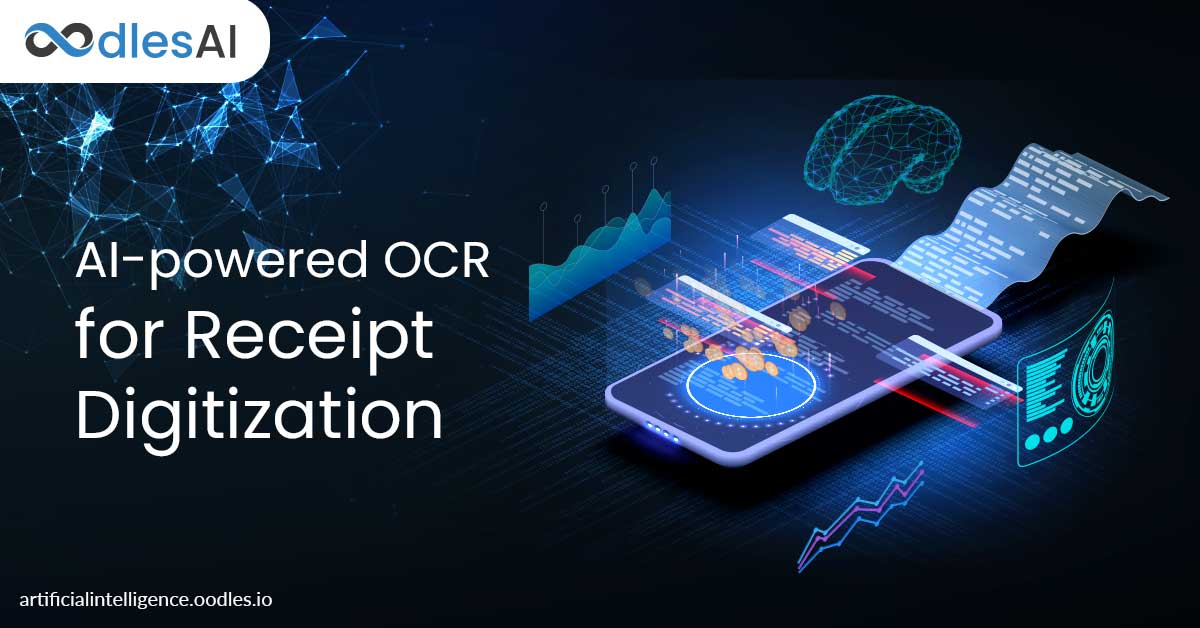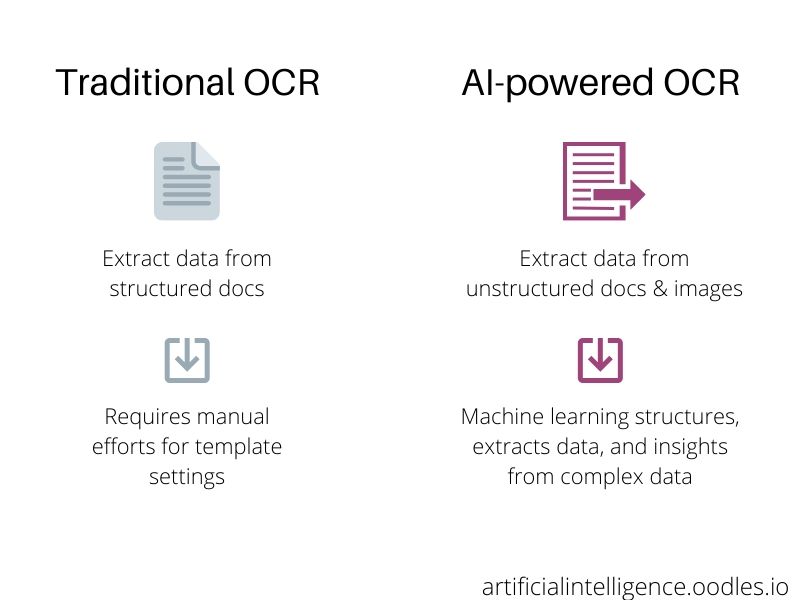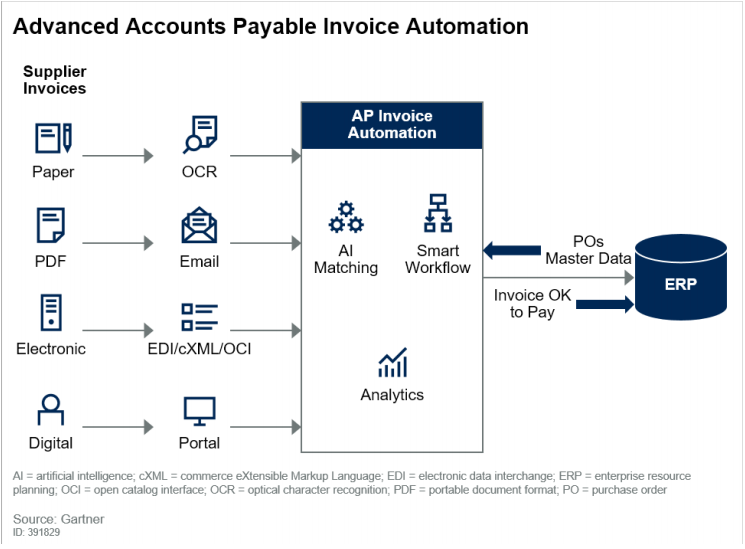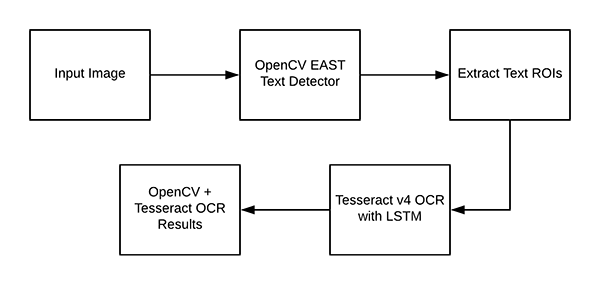AI-powered Receipt Digitization with OCR Systems for Businesses
Sanam Malhotra | 13th July 2020

As global businesses envision Industry 4.0, the scope of artificial intelligence (AI) has widened to reach core enterprise challenges. One such labor-intensive process, receipt digitization burdens enterprises with high operational costs, low efficiency, and diminishing productivity. AI technologies are disrupting traditional receipt digitization with OCR to attain greater efficiency, accuracy, and effectiveness.
We, at Oodles, as an emerging Artificial Intelligence Development Company, present a closer look into how AI automates invoice processing and receipt digitization.
How AI Powers Traditional OCR for Receipt Digitization
Contrary to traditional OCR that entirely relied on manual efforts for data extraction, AI employs deep learning for data capture from receipts and invoices. This AI breakthrough has essentially accelerated conventional business accounting processes. While traditional systems strictly required structured templates, AI can automatically detect text from both structured and unstructured documents.
As per a recenter Gartner report, by 2030, 80% of B2B invoices will by transmitted digitally across the globe.

We, at Oodles, deploy advanced AI tools and technologies such as Google-owned Tesseract OCR engine for automating receipt digitization. Our AI-driven OCR scanning services enable businesses to overcome numerous limitations faced by traditional OCR, such as-
a) AI-based OCR systems can easily identify different layouts and fields such as vendor name, date, time, items, and amount.
b) With deep learning technology, Tesseract OCR is able to detect text even in low contrast, blurred inputs, or uneven surfaces.
c) Tesseract OCR not only streamlines data extraction but also facilitates multiple output formats such as HTML, PDF, TSV, XML, and more.
d) Cost and time effectiveness is another immediate benefit of deploying deep neural networks for document and receipt digitization with OCR.
Enterprise Benefits of Receipt Digitization with OCR and AI
While receipt digitization is important for every organization, it is all the more crucial to maintain accurate receipt records for manufacturers, retailers, and wholesale suppliers. An automated OCR system for recept digitization reduces manual efforts and operational costs while streamlining invoice processing pipelines.
In addition, below are some effective use cases and advantages of deploying a deep learning approach for receipt digitization-
1) Effective Invoice Processing
With built-in knowledge of regular fonts used in invoices, Tesseract OCR makes it easier and faster to embed receipt digitization in business models. Tesseract facilitates end-to-end receipt digitization from data capture and extraction to storage and archiving.
While a typical account payable executive processes only 20 invoices a day, AI-powered OCR systems can increase efficiency by almost 60%.
Automatic detection of receipt header, items, and digits with over 95% accuracy given businesses a significant edge over competitors.
2) Easy Traceability of Accounts Payable
In the run-up to automate receipt digitization with OCR, AI also centralizes and simplifies every part of the Accounts Payable process. It enables businesses to exercise improved governance, traceability, and better control across the financial chain.

3) Seamless Supply Chain Management
A frictionless integration of AI-based OCR with business ERP systems is another advantage of AI-based OCR systems for enterprises. It leads to scalable systems that can handle multiple invoices and receipt ingestion while improving efficiency.
Also read- AI-OCR for Invoice Processing: Automating Accounts and Payments
Inside a Receipt Digitization System Driven by AI OCR
In contrast to the rule-based approach, Tesseract OCR works on flexible data training to improve efficiency and accuracy. Instead of rewriting new rules for every template, AI empowers OCR systems to eliminate template, thus providing scalability.
Following is the deep learning pipeline powered by Tesseract OCR for receipt digitization-
Step 1: Image Preprocessing with OpenCV
The first step is to analyze the greyscale of the input image. It is always helpful to have images already in greyscale and minimum noise to extract text clearly. For text recognition, we need to deploy the open-source ML library, OpenCV, followed by simple coding to apply thresholding.
 The above image shows how OpenCV intertwines with Tesseract OCR to detect and classify text in input invoices.
The above image shows how OpenCV intertwines with Tesseract OCR to detect and classify text in input invoices.
Step 2: Installing Tesseract OCR for Text Detection
In the second step, we install Tesseract that is a dynamic OCR engine developed by Google. The latest version 4 of Tesseract OCR engine churns on LSTM (Long Short-term Memory) network supporting features like character classification, segmentation, and layout analysis.
Step 3: Text Recognition and Information Extraction
The final step sees Tesseract in action while extracting valuable information from invoices and receipts. The image resolution is of the highest importance to increase text extraction accuracy. However, Tesseract still delivers over 95% accuracy for dull, obscure, and unclear input images.
The Oodles AI team recently deployed the Tesseract OCR engine for automating data extraction from identity cards, including Adhaar, passport, driving license, etc.

Here’s a screengrab of the final output from an AI-OCR system for an Adhaar card input. As apparent, the system successfully extracts all the essential information from a scanned copy of the Adhaar card using Tesseract and OpenCV.
Also read- How AI OCR for Financial Spreading Strengthens Risk Management
Oodles AI: Your Automation Partner for Receipt Digitization with OCR and AI
Amid the ongoing crises, digital transformation has turned into a “must-have” from a “should have” for businesses. We, at Oodles, harness the core technologies essential for business automation to turn the current business challenges into opportunities.
Deep learning is our weapon to optimize traditional OCR systems while reducing costs and improving operational efficiency for enterprises.
Our AI team’s experiential knowledge in training and deploying AI-OCR models enable us to automate various enterprise applications, including-
a) Digital onboarding
b) Healthcare data management
c) Automation of Invoice and receipt processing, and
d) eKYC
Join forces with our AI team to know more about our AI capabilities and solutions.




